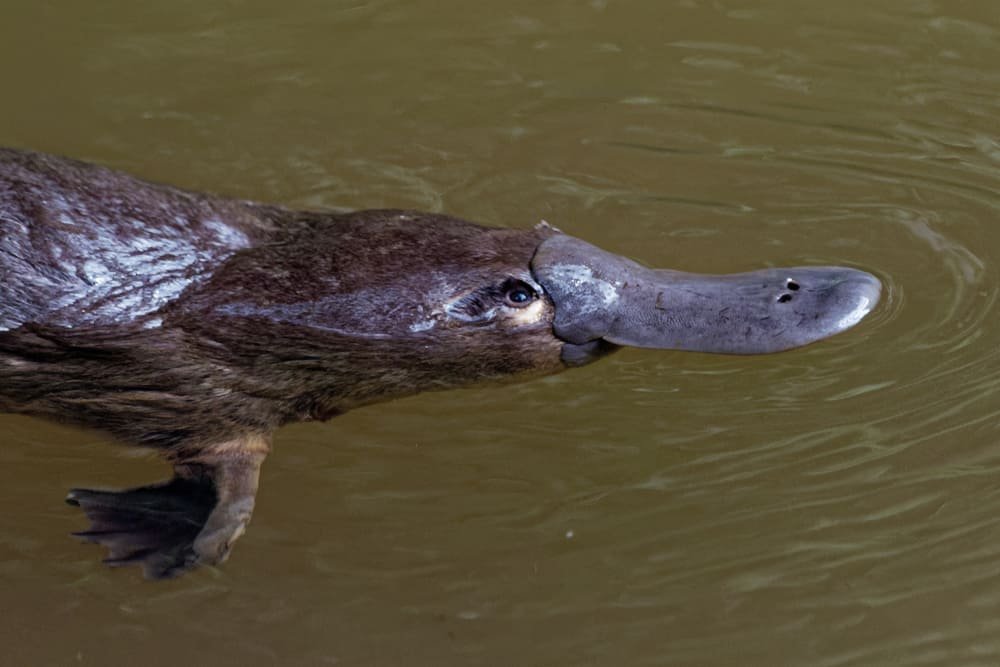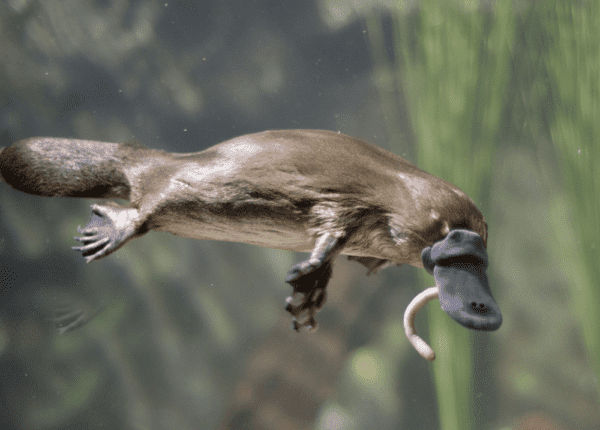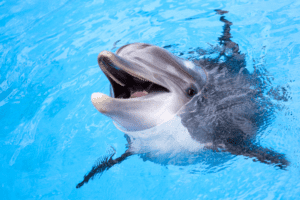The platypus (Ornithorhynchus anatinus) is a semiaquatic mammal found in eastern Australia. It is one of only two species of monotremes (egg laying predatory mammal), the other being the echidna. The platypus is both highly distinctive and unusual, with a beaver-like tail, webbed feet, and a bill that resembles that of a duck.
The platypus is an interesting creature because it lacks a stomach. Instead, it has a gizzard, which is a muscular part of the intestine that helps to grind food.
Here we have discuss about What Are The Predators Of The Platypus?
Table of Contents
What Are The Predators Of The Platypus?

Top Predators of Platypus
The platypus is a protected species in Australia, and is listed as vulnerable on the IUCN Red List. The IUCN lists the platypus as a species of “least concern” in its Red List of Threatened Species. This means that the platypus is not currently endangered or at risk of extinction.
However, the IUCN does note that the platypus is vulnerable to habitat loss and degradation, climate change, and introduced predators such as foxes and cats, which could eventually lead to the species becoming endangered.
Following are the top 11 predators of Platypus
1. Foxes (Vulpes vulpes)
Foxes are the top predators of platypus. They are skilled hunters and can take down prey much larger than themselves. Foxes typically hunt in packs, which makes them even more dangerous to platypus.
2. Eagles (Aquila chrysaetos)
Eagles (Aquila chrysaetos) are one of the main predators of platypus (Ornithorhynchus anatinus). These large birds of prey typically hunt in pairs, using their sharp eyesight to spot potential prey from a distance. When they spot a platypus swimming in a river or lake, they will swoop down and grab it with their powerful talons. Eagles will then take their prey back to their nest, where they will feed it to their chicks.
While platypus are not the primary prey of eagles, they do form a significant part of their diet in some areas. In particular, platypus are thought to be an important food source for eagles in the Australian Alps region. In this area, eagles are thought to prey on platypus more regularly than any other predator. This is likely due to the fact that platypus are one of the few animals that can be found in the cold, mountainous waters of the Alps.
3. Pythons (Pythonidae)
Pythons are a family of large, non-venomous snakes found in Africa, Asia, and Australia. More than 60 species are recognized, and they are among the longest and heaviest snakes in the world. They are also some of the most popular pets due to their docile nature and beautiful patterns. Pythons hunt platypus by constricting them. They first bite their prey and then wrap their body around it, squeezing tighter and tighter until the platypus suffocates.
4. Dogs (Canis lupus familiaris)
Dogs are the main predators of platypus (Ornithorhynchus anatinus). In fact, dogs are responsible for the majority of platypus deaths each year. Dogs typically hunt platypus at night, when the platypus is foraging for food in the water. The platypus is a very good swimmer and can elude dogs for a short period of time, but eventually the dog will catch up and kill the platypus.
5. Dingos (Canis lupus dingo)
Dingoes (Canis lupus dingo) are another top predator of platypus. These wild dogs are found throughout Australia and are known for their strength and tenacity. Dingoes often hunt in pairs or small groups, which makes them a threat to platypus.
6. Large snakes (Serpentes)
Large snakes, such as pythons and boas, are another predator of platypus. These reptiles can grow to be very large and powerful, making them a threat to platypus. Like most other predators, they will attack platypus when they are young and vulnerable. platypus have been known to be killed by large snakes, although this is not a common occurrence.
While platypus is not commonly preyed upon by large snakes, it is still important to be aware of these potential predators. If you see a large snake in your platypus habitat, it is best to remove the platypus from the area and call animal control.
7. Birds of prey (Falconiformes)
Of the few recorded platypus attacks, most have been by birds of prey such as eagles, hawks, and owls. These raptors likely see platypuses as potential meals, and they are certainly capable of killing and eating them. While platypuses do have some defenses against these predators, they are not always effective.
For example, platypuses have a thick layer of fur that can help protect them from some attacks. However, birds of prey can still penetrate this fur and cause serious injuries or even kill the platypus. In addition, platypuses often spend time in burrows or other hiding places, but birds of prey can still find and attack them.
8. Feral cats (Felis silvestris)
Feral cats are the main predators of platypus (Ornithorhynchus anatinus). Studies have shown that platypuses are particularly vulnerable to predation by feral cats when they are young and still in their natal burrows. In one study, it was estimated that over 50% of platypus mortality could be attributed to feral cats.
9. Eels (Anguilliformes)
Eels are drawn to platypuses because they are an easy meal; platypuses do not have teeth, so they cannot fight back. Eels will attack platypuses from behind, wrapping their bodies around the platypus’s neck and suffocating them. In some cases, eels will bite platypuses on the belly, causing fatal injuries. Eels are a major predator of platypuses, and they are responsible for a significant number of platypus deaths each year.
10. Crocodiles and alligators
Crocodiles and alligators are the main predators of platypuses. These large reptiles often eat platypus eggs, which are a major food source for them. In addition to eggs, crocodilians also occasionally eat adult platypuses. While not as common, this does happen, especially in areas where there is a lot of human activity and platypuses are forced to coexist with these large predators.
11. Humans (Homo sapiens)
In addition to being killed by natural predators, Humans are the biggest threat to platypuses, as we destroy their habitat and pollute their water sources. We also hunt them for their fur, which is used to make clothing and other items. Platypuses are not aggressive animals, and they are no match for humans when we set our sights on them. As a result, platypuses are in danger of becoming extinct if we don’t change our ways. Although platypus are not a major target of human hunting, they are still killed by humans on a regular basis either intentionally or accidentally.
Threats to their eggs
Eggs predations are one of the primary concerns for platypus populations. A variety of animals prey on platypus eggs, including snakes, goannas, Tasmanian devils, quolls, and eels. While platypuses are relatively well-protected from these predators while in the water, they are vulnerable when they come ashore to lay their eggs.
Status of platypus
While platypus are not currently considered to be endangered, their population is declining due to habitat loss and fragmentation. This means that it is important to take steps to protect platypus from their main predators, dogs. One way to do this is by platypus-proofing your property if you live in an area where platypus are found.
This involves making sure that your dogs (and other pets) are well- supervised and cannot access areas where platypus may be present. You can also help by reporting any platypus sightings to the authorities so that they can be protected.
How does platypus protect themselves from its predators?
The platypus is a very unique and interesting animal that has many ways of protecting itself from its predators. They have several strategies for avoiding predators. It is an excellent swimmer and can quickly escape from most predators. They can stay underwater for up to two minutes at a time.
The platypus is also able to camouflage itself in the water and mud. When platypuses feel threatened, they will often flatten their bodies and dive underwater to hide. If a platypus is attacked by a predator, it can defend itself with its sharp claws and teeth. The platypus is also able to produce a poisonous protein from a gland in its ankle that can be used to defend itself. This protein is strong enough to kill a dog if it is injected into the animal.





